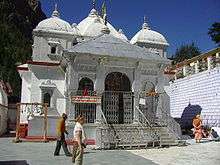Garhwali people
| गढ़वळि मन्खि | |
|---|---|
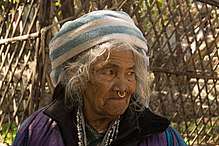 Native Garhwali Woman In Rishikesh | |
| Regions with significant populations | |
|
| |
| Languages | |
| Garhwali language | |
| Religion | |
|
| |
| Related ethnic groups | |
| Indo-Aryans, Kumaoni people, Khas people, Himachali people |
Garhwali people (गढ़वळि मन्खि) are an Indo-Aryan ethno-linguistic group who primarily live in the Garhwal Himalayas of the northern Indian state of Uttarakhand and speak the Indo-Aryan Garhwali language. Any person who has ancestral Garhwali roots or lives in Garhwal and has a Garhwali heritage is called a Garhwali.
They include all those who speak the Garhwali language or any of its numerous dialects, living in Dehradun, Haridwar, Tehri Garhwal, Pauri Garhwal, Uttarkashi, Chamoli and Rudraprayag districts of Uttarakhand, India.
Significant communities of Garhwali diaspora live in the Indian states of Uttar Pradesh, Himachal Pradesh, Haryana, Delhi, Punjab, Madhya Pradesh, Rajasthan and Maharashtra along with a sizable population overseas. According to various estimates, there are at least 2.5 million Garhwali migrants living in Delhi and the National Capital Region.
Etymology
In modern usage, “Garhwali” is used to refer to anyone whose linguistic, cultural, and ancestral or genetic origins are from the Garhwal Himalayas. Their ethnonym is derived from the word ‘Garhwal’ or 'Gadwal'. The exact origin of the word Garhwal is unknown, though it is believed to be derived from the title ‘Garh-wala’ (owner of forts) given to the ruler Ajay Pal, who is said to have consolidated 52 principalities to form the kingdom in the 14th century. After this conquest the domain under Ajay Pal is said to have been called ‘Garhwal’, possibly due to the numerous forts in the region.
The name of the region and its people prior to Ajay Pal is unknown though some historians like Atkinson have alluded to ‘Khas-des’ (Land of the Khasas) and Sircar has stated that ‘Stri-Rajya’ (Kingdom of Women) as the ancient name of Garhwal and Kumaon. However, we have no proof to corroborate these claims. The earliest reference to places in this region are in the Skanda Purana as 'Kedar Khand' and in the Mahabharata as 'Himvat' to describe the area that contained Gangadwar (Haridwar and Kankhala), Badrinath, Gandhamardan, and Kailash. [1]
Garhwal Kingdom
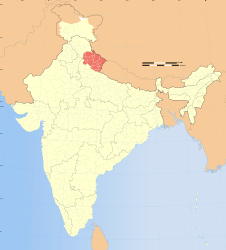
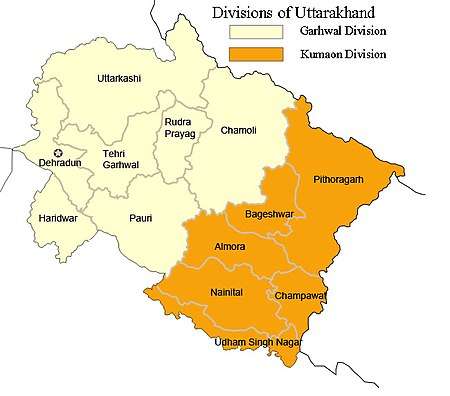
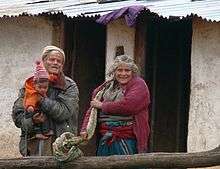
The Kingdom of Garhwal was founded by Panwar Rajputs nearly 700 years ago at a place called Chandpur Garhi. Earlier Garhwal used to have 52 principalities called Garhs(cluster of habitations). Garh was ruled by a Chief, one of these chiefs, Ajai Pal ruler of Chandpur Garhi from Panwar dynasty, reduced all the minor principalities under his own sway with the power of his sword, and founded the Garhwal Kingdom. He and his descendants ruled over Garhwal in an uninterrupted line till 1803, when the Gurkhas invaded Kumaon and Garhwal, driving the Garhwal chief into the plains. For twelve years the Gurkhas ruled the country with a rod of iron, until a series of encroachments by them on British territory led to the Anglo–Nepalese War in 1814. At the termination of the campaign, Garhwal Kingdom and Kumaon Kingdom were converted into British districts, while the Tehri principality was restored to a son of deceased king Pradyumn Shah, King Sudarshan Shah. Another part taken by British was called British Garhwal and had an area of 5,629 mi2 (14,580 km2). Garhwal rapidly advanced in material prosperity. Two battalions of the Indian army (the 39th Garhwal Rifles) were recruited in the district, which also contained the military cantonment of Lansdowne. Grain and coarse cloth were exported, and salt, borax, livestock and wool were imported, and the trade with Tibet was considerable. The administrative headquarters were at Pauri, but Srinagar(Garhwal) was the largest city. It was an important mart, as was Kotdwara -the terminus of a branch of the Oudh and Rohilkhand railway from Najibabad. Later it was part of the Punjab Hill States Agency of British India, consisting of the present day Tehri Garhwal district and most of the Uttarkashi district and acceded to the Union of India in 1949.
Language
The Garhwali language (गढ़वळि भाख/भासा) is primarily spoken by the Garhwali people of the north-western Garhwal Division from the northern Indian state of Uttarakhand in the Indian Himalayas. The Garhwali language is classified as a Central Pahari language belonging to the Northern Zone of Indo-Aryan languages. Garhwali is one of the 325 recognised languages of India[2] spoken by over 2,267,314[3] people in Tehri Garhwal, Pauri Garhwal, Uttarkashi, Chamoli, Dehradun, Haridwar and Rudraprayag districts of Uttarakhand.[4]
Garhwali was the official language of the Kingdom of Garhwal since the 8th century. Garhwal was always a semi-sovereign kingdom under the Garhwali Kings. Naturally, Garhwali was the official language of the Garhwal Kingdom for hundreds of years under the Panwar (Shah) Kings and even before them, until the Gurkhas captured Garhwal and subsequently the British occupied part of Garhwal, which later came to be called British Garhwal.
The language has many regional dialects including:[5] Srinagari, Tehri (Gangapariya), Badhani, Dessaulya, Lohbya, Majh-Kumaiya, Bhattiani, Nagpuriya, Rathi, Salani (Pauri), Ravai, Parvati, Jaunpuri, Gangadi (Uttarkashi), Chandpuri. Srinagari dialect is the literary standard while Pauri is generally regarded as the sweetest.
However, due to a number of reasons, Garhwali is one of the languages which is shrinking very rapidly. UNESCO's Atlas of the World's Languages in Danger designates Garhwali as a language which is in the unsafe category and requires consistent conservation efforts.[6]
Local deities
Chandrabadni Devi Temple: this place is in Tehri garhwal and one can reach the temple either from Kandikhal en route Srinagar-Tehri, from where it is an 8 km walk to the temple or from Jamnikhal en route Dev Prayag-Tehri via a link road up to Jurana (9 km) and then take a bridle path (1.5 km) up to the temple. A big fair is held in April every year. Adding to the various religious and culture performances, the view of the snowcapped Himalayas is soul lifting. A visit to the shrine is an experience to cherish.[7]
| Rudraprayag | |
|---|---|
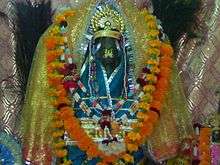 |
|
| Umra Narayan | Koteshwar Mahadev |
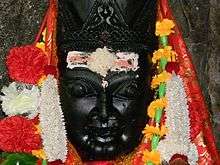 |
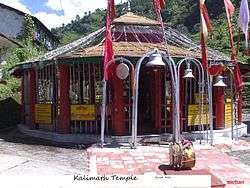 |
| Dhari Devi (Uttarakhand) | Kalimath |
Umra Narayan: placed between the mystic and peaceful hills of Rudraprayag lies the Devine temple of Lord Umra Narayan (Isth Dev of gram sann). According to mythology this temple was built during the time of Adi Shankracharya and it is believed that it was built by his holiness Adi Shankracharya when he was on his way to Lord Badrinath's temple. The temple now has been renovated and is 5–7 km away from the main city of Rudraprayag with Maa Alaknanda flowing tranquily nearby. It is also believed that most of the Isth Devas of Garhwal regions are incarnations of Lord Vishnu (Narsingh dev ji)
or sometimes Vishnu itself.
Koteshwar Mahadev: is located about three km inside the 'heart' of Rudraprayag, Koteshwar Mahadev Temple is dedicated to Lord Shiva. This place is presumed to be the same spot where Lord Shiva had stopped for meditation on his way to Kedarnath. According to a local mythology this temple has its presence since the time of bhasmasur (the Deadly Asur/demon who got a boon/vardan from lord Shiva that whosoever's head will be touched by him, will be turned into bhasma or ashes .Seeing the powerful effects of this boon he tried to bhasam lord Shiva Lord Shiva kept on hiding from place to place and finally came to this place which was a cave, lord Shiva resided here for some time meditating lord Vishnu and finally lord Vishnu helped him by killing the demon. The temple is filled with amazing energy/aura and one can feel it. Few drops of water keeps on dropping in lords lingam seeping through the hill.
Dhari Devi (Uttarakhand): The temple of Dhari Devi is situated on the banks of the river Alaknanda. One has to travel 15 km. from Srinagar (Pauri Garhwal) on Srinagar-Badrinath highway to Kaliya Saur, then trek down another half a kilometre towards Alaknanda river. The upper part of Goddess Kali is worshipped here and the remaining part in Kalimath. As opinion of villagers the face of the idol changes as a girl, a woman and an old lady as the progress of time. This idol is in the open. Many times villagers and some philanthropists have tried to build a roof for Maa, but every time it has been destroyed. Local myths say that Maa Likes to shower her blessings in the open. As per Srimad Devi Bhagwat there are 108 shakti peethas in India and this holy shrine is one of them.
Kalimath: Kalimath (originally known, and still sometimes referred to, as Kaviltha) is a village which is regarded as a divine place and shakti peeth. It lies at an altitude of around 6,000 feet (1,800 m) on the river Saraswati in the Himalayas, surrounded by the peaks of Kedarnath in Rudraprayag District of Uttarakhand, India. Kalimath is situated close to Ukhimath, and Guptakashi. It is one of the "Siddha Peeths" of the region and is held in high religious esteem. The temple of Goddess Kali located here is visited by a large number of devotees round the year and specially during the "Navratras". There are 108 Shakti Peethas in India and this holy shrine is one of them as per Srimad Devi Bhagwat. The upper part of Goddess Kali is worshipped in Dhari Devi(Uttarakhand) and the remaining part in Kalimath Religious tradition is that Kalimath is where Kali killed the demon Raktavija and had gone under the earth. Kalimath is only the place where goddess Kali is worshipped along with her sisters Laxmi and Saraswati. There is a temple of the goddess Kali, which is visited by a large number of devotees throughout the year, and especially during the Navratras. A peculiar thing about the temple is that there is no idol that is worshipped here, instead, the Sri Yantra, is the object of devotion. On one day each year the goddess is taken out and Puja is performed at midnight, with only the chief priest present. The temple is other ancient temples to Laxmi, Saraswati, Gauri Shankar and many antique Shivlings, idols of Nandi, Ganesh etc. An eternal holy flame always burns in the temple of Laxmi. Bhairava Mandir is also located very near. Barti Baba is credited for preserving the sanctity of this holy shrine.All the people who met him and the locals say that he had direct connection with Maa Kali. The guru and Member of Parliament, Satpal Singh Rawat (Maharaj), has set up a small Dharamshala very close to the temple. Pilgrims can stay there. The village is the birthplace of Kalidas, a Sanskrit poet.
Surnames of Garhwali people
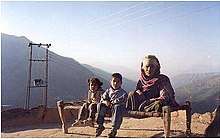
Some of the surnames in Uttarakhand are Nautiyal, Thapliyal, Dangwal, Dhaundiyal, Bhandari, Bhadri, Dobriyal, Baurai, Panthwal, Dobhal / Doval, Semwal, Maithani, Dabral, Kukreti, Kandari, Joshi, Barthwal, Chandola, Baunthiyal, Pawar, Rana, Mamgain, Jhildiyal, Jakhmola, Gauniyal, Ghildiyal, Amoli, Dhulia, Khanduri, Silori, Anthwal, Semalti, Gairola, Raturi, Bisht, Dimri, Rautela, Pant, Gusain, Devrani / Deorani, Bhatt, Juyal / Jayal, Suyal, Sundriyal, Jugran, Kainthola, Pokhriyal, Chamoli, Dyundi, Nawani / Nauni, Chauhan, Hatwal, Binjola, Butola, Kothiyal, Kaparwan / Kapruwan, Satti/Sati, Chand, Kala, Bahuguna, Bijalwan, Dhasmana, Painuli, Khugshal, Kimothi, Negi, Rawat, Lakhera, Saklani, Ramola, Dhyani, Duklan, Farswan, Badola, Aswal, Baluni, Baludi, Rauthan etc.
List of Garhwali people
This is a list of some famous people with Garhwali heritage:
Film and Television
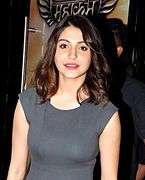 Anushka Sharma
Anushka Sharma Manasvi Mamgai
Manasvi Mamgai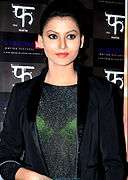 Urvashi Rautela
Urvashi Rautela Anukriti Gusain
Anukriti Gusain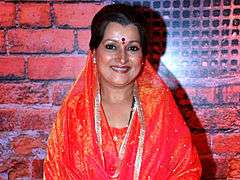 Himani Shivpuri
Himani Shivpuri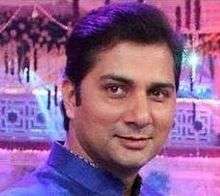 Varun Badola
Varun Badola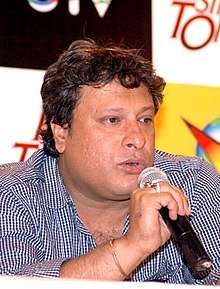 Tigmanshu Dhulia
Tigmanshu Dhulia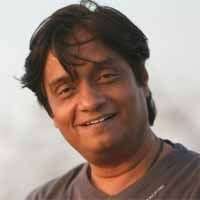 Brijendra Kala
Brijendra Kala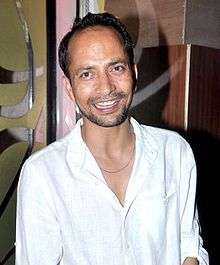 Deepak Dobriyal
Deepak Dobriyal
Bollywood
- Anushka Sharma (actress, born to Garhwali mother)
- Sonu Nigam (singer, born to Garhwali mother)
- Udita Goswami (actress, born to Garhwali father)
- Chitrashi Rawat (actress)
- Deepak Dobriyal (actor)
- Urvashi Rautela (actress)
- Himani Shivpuri (actress)
- Varun Badola (actor)
- Brijendra Kala (actor, dialogue writer)
- Tigmanshu Dhulia (dialogue writer, director, actor, screenwriter, producer and casting director)
Television
- Shilpa Saklani (actress)
- Barkha Bisht (actress)
- Shruti Ulfat (actress)
- Aditi Sajwan (actress)
- Asha Negi (actress)
- Raghav Juyal (dancer, choreographer and actor)
- Manoj Ramola (casting director and author)
- Richa Panai (actress)
- Shruti Bisht (actress)
- Shivangi Joshi (actress)
- Prakriti Nautiyal (actress)
Beauty Pageants
- Anukriti Gusain (actress, Femina Miss India, Asia Pacific World 2014)
- Manasvi Mamgai (model, Femina Miss India 2010)
Hollywood
- Navi Rawat (born Navlata Rawat) (American actress, born to Garhwali father)
Music
Folk Music
- Chander Singh 'Rahi' (Garhwali folk singer, composer, poet musician)
- Narendra Singh Negi (Garhwali folk and popular singer, composer)
- Meena Rana (Garhwali singer)
- Basanti Devi Bisht (Garhwali jagar folk singer, Padma Shri)
Hindi Rock
- Rakesh Bhardwaj (Euphoria band member- Dholak and Percussion)
Art
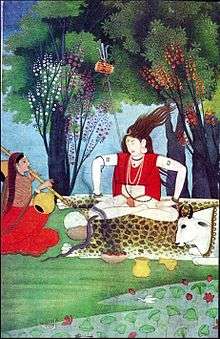 Mola Ram painting 1
Mola Ram painting 1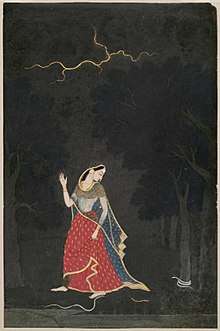 Mola Ram painting 2
Mola Ram painting 2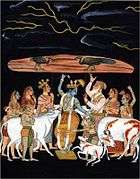 Mola Ram painting 3
Mola Ram painting 3
- Mola Ram (18th century Indian painter, who originated the Garhwal branch of the Pahadi/Kangra school of painting)
- Leeladhar Jagudi (Hindi writer, poet, Sahitya Akademi Award, Padma Shri)
- Manglesh Dabral (Hindi writer, poet, Sahitya Akademi Award (India's National Academy of Letters))
- Ranbir Singh Bisht ( Indian painter and the Principal of the College of Fine Arts, Lucknow University (Padma Shri, Lalit Kala Akademi Fellowship, UP Lalit Kala Akademi Fellowship))
- Viren Dangwal (Hindi writer, poet, journalist & academician, Sahitya Akademi Award)
Social Work
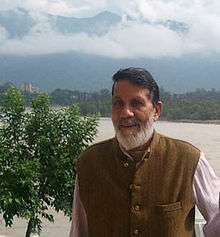 Chandi Pr Bhatt
Chandi Pr Bhatt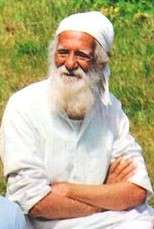 S.L. Bahuguna
S.L. Bahuguna
- Kunwar Singh Negi (braille editor and social worker, Padma Shri, Padma Bhushan)
- Sunderlal Bahuguna (environmentalist, Chipko movement leader, Padma Vibhushan)
- Chandi Prasad Bhatt (environmentalist, Padma Shri)
- Gaura Devi (Leader of Mahila Mangala Dal (Chipko movement) - Indira Priyadarshini Vriksha Mitra Award or IPVM Award)
- Swami Rama, born Brij Kishore Kumar Dhasmana (Shankaracharya of Karvirpitham, founder of The Himalayan Institute Hospital Trust)
- Prem Rawat (born Prem Pal Singh Rawat, Controversial Indian American spiritual leader, Also known as Maharaji, and formerly as Guru Maharaj Ji and Balyogeshwar)
Science and Research
- Vijay Prasad Dimri (geophysical scientist, Padma Shri)
Indian Armed Forces
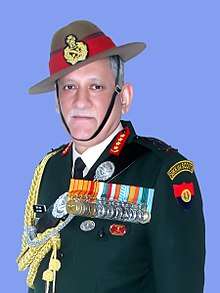 Bipin Rawat
Bipin Rawat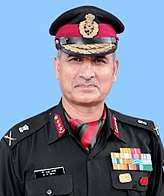 BS Negi
BS Negi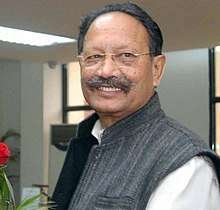 B.C. Khanduri
B.C. Khanduri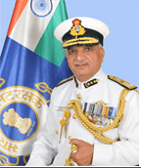 Rajendra Singh
Rajendra Singh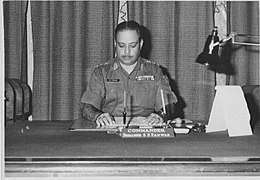 S.S. Panwar
S.S. Panwar
Gallantry Awards
- Naik Darwan Singh Negi, Victoria Cross from 1st Battalion of 39th Garhwal Rifles
- Rifleman Gabar Singh Negi, Victoria Cross from 2nd Battalion, 39th Garhwal Rifles
- Rifleman Jaswant Singh Rawat, hero of Indo-China War, 1962; Maha Vir Chakra (posthumous)
- Naik Bhavani Datt Joshi, Operation Blue Star 1984, Ashoka Chakra (posthumous)
- Havaldar Gajender Singh Bisht, Operation Black Tornado 2008, Ashoka Chakra (posthumous)
Prominent Names
- Havaldar Major Chandra Singh Bhandari, 'Veer Chandra Singh Garhwali', hero of Peshawar Incident of 1930, also called Qissa Khwani Bazaar massacre
- General Bipin Rawat, Chief of Army Staff, Indian Army
- Lt. General Anil Bhatt, current General Officer Commanding (GOC) XV Corps, also called the Chinar Corps, of the Indian Army. Former Director General of Military Operations (DGMO), Indian Army
- Lt. General Anil Chauhan, Director General of Military Operations (DGMO), Indian Army
- Lt. General Balwant Singh Negi, General Officer Commander-in-Chief (GOC-in-C), Central Command, Indian Army
- Director General Rajendra Singh, Director General, Indian Coast Guard
- Major General Bhuwan Chandra Khanduri, former Chief Minister of Uttarakhand, former Member of Parliament, Lok Sabha
- Lt. General M. M. Lakhera, former Governor of Mizoram, ex-Lieutenant Governor of Pondicherry
- Brigadier Surendra Singh Panwar
Bureaucracy
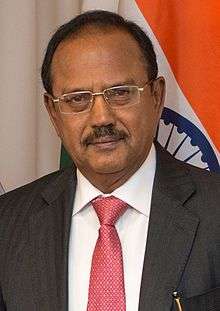 Ajit Doval
Ajit Doval.jpg) OP Rawat
OP Rawat
- Ajit Kumar Doval, 5th National Security Adviser of India
- Anil Dhasmana, Chief of the Research and Analysis Wing, India
- Om Prakash Rawat , current Chief Election Commissioner of India, Retired 1977 batch IAS officer. Also served as the Public Enterprise Secretary of India.
Freedom Fighters
- Ram Prasad Nautiyal (freedom fighter)
Judiciary
- Barrister Mukandi Lal (Advocate, judge, politician, writer, and art critic from Garhwal)
- Sudhanshu Dhulia (Sitting Judge, Uttarakhand High Court. Judge In-Charge Education, Uttarakhand Judicial and Legal Academy)
- K.C. Dhulia (Judge, Allahabad High Court)
Politics
- Hemwati Nandan Bahuguna (politician)
- Mala Raj Laxmi Shah (politician)
- Mohan Singh Bisht (politician)
- Ramesh Pokhriyal (politician)
- Vijay Bahuguna (politician)
- Rita Bahuguna Joshi (politician)
- Yogi Aditya Nath, born as Ajay Mohan Bisht (politician; Mahant, Peethadhishwar of Gorakhnath Math)
- Satpal Singh Rawat (politician)
- Lt. Col. Manabendra Shah (politician)
Business and Industry
- O. P. Bhatt, Indian Banker, 22nd Chairman of State Bank of India.
- Sonal Dabral, Chairman and Chief Creative Officer of the DDB Mudra Group, India.
Sports
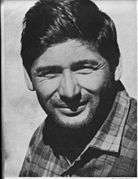 HV Bahuguna
HV Bahuguna_D._Jayal.jpg) ND Jayal
ND Jayal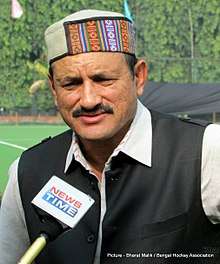 MR Negi
MR Negi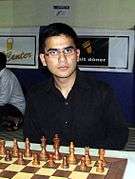 Parimanjan Negi
Parimanjan Negi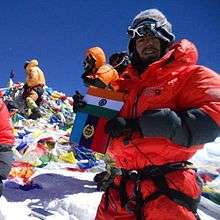 Arvind Raturi
Arvind Raturi.jpg) Vartika Joshi
Vartika Joshi
Mountaineering
- Bacchendri Pal (Mountaineer, first Indian woman to conquer Mt. Everest, Padma Shri)
- Kanhaya Lal Pokhriyal (Indian Police official and mountaineer, summited Mt. Everest, Padma Shri)
- Major Harsh Vardhan Bahuguna (Mountaineer, Padma Shri)
- Major Narendra Dhar Jayal (Mountaineer, Founder principal of the Himalayan Mountaineering Institute at Darjeeling)
- Major Jai Vardhan Bahuguna (Mountaineer)
- Arvind Raturi (Mountaineer, scaled Mt. Everest as a part of the NCC Mt Everest Expedition Team 2013 )
Shooting
- Jaspal Rana (Commonwealth Games gold medalist in shooting, Padma Shri)
- Sushma Rana (2006 Commonwealth Games at Melbourne)
Chess
- Parimarjan Negi (Third youngest Chess grand-master in history, Arjuna Award 2010)
Hockey
- Mir Ranjan Negi (Former goalkeeper of Indian men's national hockey team; former coach of Indian women's national hockey team that won the Gold at 2002 Commonwealth Games, of Chak De India fame)
Badminton
- Madhumita Bisht (born Madhumita Goswami) (Badminton player, Arjuna Award 1982, Padma Shri))
Sailing
- Lt. Commander Vartika Joshi (Commander of Indian Navy's six women crew of sailboat INSV Tarini that circumnavigated the globe (Navika Sagar Parikrama) in 2018)[8]
Athletics
- Surinder Singh Bhandari (Marathon runner, 2008 Beijing Olympics, Athletics coach - Army Sports Institute, Pune)[9]
- Manish Rawat (Race-walker), 2016 Rio Olympics)[10]
Cricket
- Hemlata Kala (Cricketer)
- Pawan Suyal (First-class cricketer, Left-arm medium-pace bowler. Plays for Delhi in domestic cricket. Currently a part of Delhi Daredevils team in IPL)[11][12]
- Aryan Juyal (Wicketkeeper batsman. Part of the India National Under-19 cricket team that won the 2018 Under-19 Cricket World Cup finals against Australia in 2018)
Football
- Manish Maithani (Indian football player who plays as a Central Midfielder for Indian Super League club FC Pune City)
- Deependra Singh Negi (Indian professional footballer who plays as a midfielder for Kerala Blasters in the Indian Super League)
- Sahil Panwar (Indian professional footballer who plays as a defender for Pune City in the Indian Super League)
See also
References
- ↑ Rawat, Ajay S. Garhwal Himalayas: A Study in Historical Perspective.
- ↑ "India languages". We make learning fun. Hindikids. Retrieved 14 May 2013.
- ↑ "Census of India - Statement 1". 2012-02-06. Retrieved 2018-05-28.
- ↑ Claus-Peter Zoller (March 1997). "Garhwali. A language of India". Ethnologue. Retrieved 14 May 2013.
- ↑ "Garhwali". Ethnologue. Retrieved 2018-05-31.
- ↑ "UNESCO Interactive Atlas of the World's Languages in Danger". UNESCO. Retrieved 14 May 2013. Search 'Garhwali'
- ↑ "Chandrabadni Devi Temple". euttaranchal.com. Retrieved 14 May 2013.
- ↑ "Navika Sagar Parikrama - Circumnavigating The Globe on an Indian-Built Sail Boat INSV Tarini by Women Naval Officers". pib.nic.in. Retrieved 2018-06-06.
- ↑ "The marathon man: Frontline to backroom, Surinder Singh Bhandari makes seamless transition as wards corner glory". The Indian Express. 2016-01-21. Retrieved 2018-06-06.
- ↑ "Dehradun's Manish to represent India in Japan's Asian Walking Championship 2017 - Himalayan Buzz". Himalayan Buzz. 2017-02-12. Retrieved 2018-06-06.
- ↑ NDTVSports.com. "Pawan Suyal Profile - Cricket Player,India|Pawan Suyal Stats, Ranking, Records inCricket -NDTV Sports". NDTVSports.com. Retrieved 2018-06-20.
- ↑ "7 Popular Cricket Players from Uttarakhand - Himalayan Buzz". Himalayan Buzz. 2016-03-14. Retrieved 2018-06-20.
